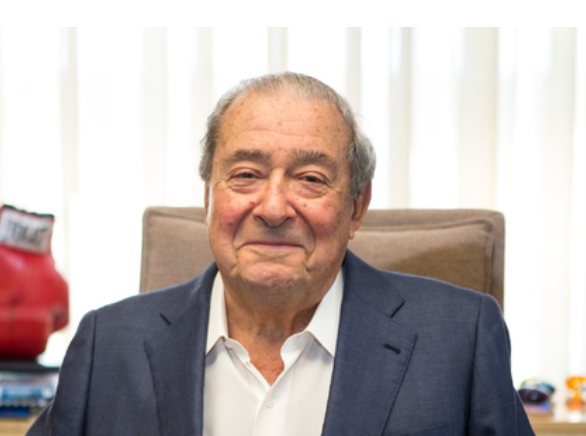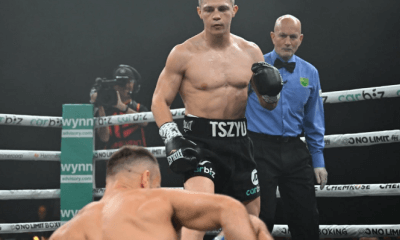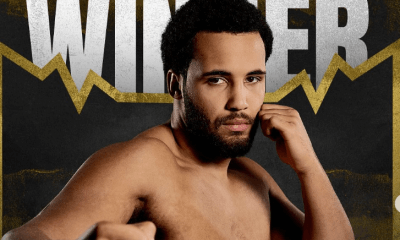Featured Articles
Bob Arum Perseveres as Many of His Old Stomping Grounds Bite the Dust

Bob Arum Perseveres as Many of His Old Stomping Grounds Bite the Dust
Someone once said that the only constant in life is change. That goes double for Las Vegas, the city that is constantly re-inventing itself. Casino-resorts seemingly change ownership on a whim, begetting a make-over, and others are imploded to make way for whatever is next.
Top Rank honcho Bob Arum has seen it all in the four-plus decades he has been making waves in Sin City. He has out-lived so many Las Vegas casinos that we have lost count.
It was learned last week that three more Las Vegas hotel-casinos are headed to the scrap heap. Station Casinos is shedding three of their nine Las Vegas properties. Texas Station, Fiesta Rancho, and Fiesta Henderson are being torn down and the land underneath them has been put up for sale. Because these are locals-oriented casinos situated off the Las Vegas Strip, this wasn’t a national news story.
Texas Station in North Las Vegas happens to be the place where Floyd Mayweather Jr made his professional boxing debut. We have a suggestion for whoever buys the property – how about some sort of permanent marker to commemorate the event? One doesn’t have to like Floyd to acknowledge that he left a large footprint. Monuments have been built in homage to boxers of far less prominence.
Mayweather made his pro debut on Oct. 11, 1996, on a Top Rank show staged in a small outdoor arena. Two other future world title-holders – Diego “Chico” Corrales and Eric Morel – appeared on the undercard. The featured bout pit Johnny Tapia in a WBO 115-pound world title defense against Sammy Stewart (Tapia TKO 7). In hindsight, it was a show that merited more ink than it got.
By then, Bob Arum was well-established in the city. The first sighting of him had come in December of 1976 when he co-promoted a show at the Aladdin featuring Earnie Shavers. The following year, Arum co-promoted several more shows at the Aladdin, the most noteworthy of which was an October card that marked the first 10-rounder for U.S. Olympian Leon Spinks who was matched against Minnesota journeyman Scott LeDoux.
Arum’s partners in these ventures were veteran matchmaker Mel “Red” Greb, who kept his day job as a craps dealer, and the noted wise guy Irving “Ash” Resnick, a casino host whose specialty was collecting unpaid markers. Neon Leon managed only a draw against LeDoux which made it all the more shocking when he upset Muhammad Ali four months later.
The Aladdin was imploded in 1998. It sat where Planet Hollywood now sits. Two years earlier, the Hacienda was torn down to make way for Mandalay Bay. A small casino at the far south end of the Strip, the Hacienda housed club fights in its so-called Matador Ballroom. Arum has fond memories.
In February of 1981, Arum initiated a series of monthly shows at the Hacienda which were televised on the fledgling ESPN network. His second and fourth shows featured a fresh-faced, 21-year-old super bantamweight from Massachusetts who would go on to become a big local attraction. The kid’s name was Freddie Roach.
Arum took Freddie Roach with him when he settled in at the Showboat where the Top Rank ESPN series had a long run beginning in 1982.
There were actually two unrelated properties with Showboat motifs operating simultaneously in Las Vegas, one situated on the Las Vegas Strip and the other on Boulder Highway on the outskirts of the downtown gambling district. This second Showboat whose signature attraction was the bowling alley, a key stop on the professional tour, was heavily vested in boxing before Arum came along and crashed the party.
Freddie Roach had 15 fights on Top Rank shows at the Showboat, all of which were main events. He won 10. In his final fight here, he passed the torch, in a manner of speaking, to Greg Haugen, who stopped him in the seventh round. Haugen supplanted Roach and Texas lightweight Robin Blake as the ‘Boat’s most popular “house fighter.” He was 8-0 at the Showboat and won another fight for Top Rank on an ESPN show at the Sahara prior to wresting the IBF world lightweight title from Jimmy Paul at Caesars Palace.
The Showboat, which bore the name Castaways in its end days, is long gone. The casino with its 19-story hotel tower was demolished in July of 2005 and is now the site of an apartment complex.
Of all the Las Vegas hotel-casinos that have passed into antiquity, none is as fabled as the Sands. The Rat Pack frolicked here.
The number of boxing shows hosted by the Sands can be counted on one hand, but Bob Arum turned up here too. Top Rank promoted the March 30, 1991 card at which 19-year-old featherweight Rafael Ruelas stamped himself a rising star with a third-round blast-out of former title-holder Stevie Cruz. Future Hall of Famer James Toney appeared on the undercard in a stay-busy fight. Toney’s next bout would come against IBF middleweight champion Michael Nunn.
The Sands was reduced to rubble on Nov. 26, 1996. A mega-resort, the Venetian, rose like a Phoenix from the ashes.
Twenty years later, in the summer of 2016, another iconic Las Vegas casino-resort went poof when the Riviera was blasted into oblivion. Arum wasn’t nearly as active at this property as was his great rival Don King, but he brought Marvelous Marvin Hagler here in March of 1984 to oppose the rugged Argentine battler Juan Domingo Roldan. Hagler, the undisputed world middleweight champion, was making his ninth title defense. He stopped Roldan in the 10th round.
Several of the venues where Top Rank did business are still standing but have been re-branded. The Las Vegas Hilton, where Arum parked Ali-Spinks I, morphed into the Westgate. The Holiday Casino, where Arum had a cup of coffee in 1990 (Michael Carbajal vs. Fernando Martinez was the featured bout) became Harrah’s. Bally’s, the city’s original MGM Grand, is in the process of being re-branded the Horseshoe. George Foreman fought one of his comeback fights at Bally’s on a Top Rank promotion.
There’s an old saying that when one window of opportunity closes, another opens. Bob Arum would know. Through all the hubbub, Arum never missed a beat. When in a pinch, he always found a new roosting place for one of his smaller shows as he was plotting another grand spectacle.
The newest addition to the ever-evolving Las Vegas skyline is Resorts World, a 3,506-room mega-resort that opened in June of last year. In March, the property on the grounds of the demolished Stardust held its first boxing event. Predictably, it was a Top Rank promotion. Top Rank returns here next month with a card featuring the return of Teofimo Lopez.
There will come a day when Resorts World joins its Las Vegas forerunners in the casino graveyard. It’s just the natural order of things. My goodness, will the indefatigable Bob Arum out-live this joint too?
To comment on this story in the Fight Forum CLICK HERE
—
Arne K. Lang’s latest book, titled “George Dixon, Terry McGovern and the Culture of Boxing in America, 1890-1910,” will shortly roll off the press. The book, published by McFarland, can be pre-ordered directly from the publisher (https://mcfarlandbooks.com/product/clashof-the-little-giants) or via Amazon.
-

 Featured Articles4 weeks ago
Featured Articles4 weeks agoThe Hauser Report: Zayas-Garcia, Pacquiao, Usyk, and the NYSAC
-

 Featured Articles3 weeks ago
Featured Articles3 weeks agoOscar Duarte and Regis Prograis Prevail on an Action-Packed Fight Card in Chicago
-

 Featured Articles2 weeks ago
Featured Articles2 weeks agoThe Hauser Report: Cinematic and Literary Notes
-

 Book Review2 weeks ago
Book Review2 weeks agoMark Kriegel’s New Book About Mike Tyson is a Must-Read
-

 Featured Articles4 weeks ago
Featured Articles4 weeks agoRemembering Dwight Muhammad Qawi (1953-2025) and his Triumphant Return to Prison
-

 Featured Articles7 days ago
Featured Articles7 days agoMoses Itauma Continues his Rapid Rise; Steamrolls Dillian Whyte in Riyadh
-

 Featured Articles3 weeks ago
Featured Articles3 weeks agoRahaman Ali (1943-2025)
-

 Featured Articles3 weeks ago
Featured Articles3 weeks agoTop Rank Boxing is in Limbo, but that Hasn’t Benched Robert Garcia’s Up-and-Comers



















